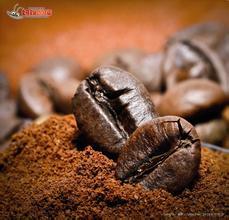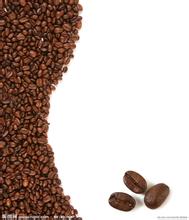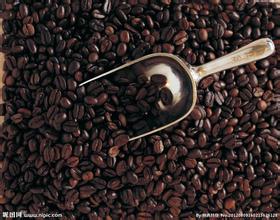Introduction to Coffee Fine Coffee from Limon Manor in Nicaragua
Coffee is Nicaragua's main export. According to the president of the Nicaraguan Coffee Farmers' Federation, due to the poor harvest of coffee in Nicaragua's Pacific region, the country's total coffee production in 1998 may be 12% lower than that in 1997. In the 1997-1998 coffee year, Nicaragua harvested a total of 1.422 million bags (46kg per bag) of coffee, the best harvest in 14 years after coffee production hovered around 1 million bags. It is estimated that the income from coffee exports in 1998 will be about 1.6 billion US dollars, and Nicaraguan coffee production will drop sharply. Wei Kailei coffee is Nicaragua's main export product. According to the president of the Nicaraguan Coffee Farmers' Federation, due to the poor harvest of coffee in the Pacific region of Nicaragua, the total coffee production of the country in 1998 may be 12% lower than that of 1997 and 1998. Nicaragua is now one of the poorest countries in Central America. Due to the poor economic foundation, the coffee industry is still in a backward state, while coffee farmers are in a state of extreme poverty. Fortunately, Nicaraguan coffee has received some foreign aid funds to improve the quality of its coffee. The coffee produced in Nicaragua's Madagelba, Sinodega and Segovia is highly respected by coffee lovers all over the world. In particular, coffee from the Madhaelba region tastes very similar to Kenyan AA coffee, high-quality Nicaraguan coffee, grown in the north and middle of the country. Coffee is a pillar industry in Nicaragua, producing nearly 100,000 tons of coffee beans every year. Many people who have tasted Nicaraguan coffee usually think that it is no different from Salvadoran coffee or Honduran coffee. It is rich in aroma, smooth and delicate, with a slightly bitter aftertaste, like a faint taste in the wine. Nicaragua is now one of the poorest countries in Central America. Due to its poor economic foundation, the coffee industry is still relatively backward, while coffee farmers are in extreme poverty. Fortunately, Nicaraguan coffee has received some foreign aid funds to improve the quality of its coffee. The coffee produced in Nicaragua's Madagelba, Sinodega and Segovia is highly respected by coffee lovers all over the world. The coffee produced in Madaguelba, in particular, tastes very similar to Kenyan AA coffee.
Nicaragua is one of the major coffee-producing countries, producing high-quality coffee. Even coffee from the Antigua Mountains of Guatemala, which is famous in Asia, imports raw beans from Nicaragua. Nicaraguan coffee is not well-known in Asia. But in fact, Nepalese coffee is already famous all over the world (Starbucks has many cooperative coffee farmers in Nepal), while the coffee quality produced by several coffee producing countries in Central America, such as Guatemala, Costa Rica and Nicaragua, is similar, mainly due to weather conditions, soil fertility, planting height and other conditions.
Nepalese coffee cultivation and production has a unique environment, the spread of fertile volcanic ash soil, coupled with shade planting methods, to establish a good production quality, Nepalese coffee has a rich mellow and fragrant taste, moderate acidity and a good sense of balance of bitter taste, which is regarded as top grade in the eyes of international coffee experts.
Because of the national character of the Latin American people, it is difficult for foreign buyers to do business with the Latin people directly. The Latin people do not attach importance to credit, do things too casually, the quality of shipments is uncertain, and the products exported are also mixed with sundries. But Latin America actually does have a good planting environment suitable for growing agricultural products all over the world, so we came to Nicaragua to ensure the quality of goods and deliver goods on schedule. It is hoped that coffee lovers can enjoy high quality Nepalese coffee.

Important Notice :
前街咖啡 FrontStreet Coffee has moved to new addredd:
FrontStreet Coffee Address: 315,Donghua East Road,GuangZhou
Tel:020 38364473
- Prev

Unique flavor of Panamanian Erida Manor Coffee grindability treatment, roasting degree, taste characteristics
In 2007, Guatemala added the eighth coffee producing area, Acatenango Valley (R), which we turned into Akatilan fruit area. In 2007, Anacaf (Guatemalan Coffee Association) not only promoted it at the SCAA exhibition, but also arranged special topics to explain to the international judges during the national competition. In the past, Guatemala claimed to have seven major producing areas, which not only distinguished the characteristics, but also made good memories for buyers and consumers. 7
- Next

Rich and mellow Paradise Bird Manor Coffee Grinding Flavor description method in Papua New Guinea
Papua New Guinea is the second largest country in the South Pacific after Australia in population and area. It consists of New Guinea in the north and Papua in the south. It borders the province of Irian Jaya in Indonesia to the west and faces Australia across the Torres Strait to the south. Papua New Guinea, which belongs to Melanesia, is divided into 21 provinces and capital districts (Morse).
Related
- Does Rose Summer choose Blue, Green or Red? Detailed explanation of Rose Summer Coffee plots and Classification in Panamanian Jade Manor
- What is the difference between the origin, producing area, processing plant, cooperative and manor of coffee beans?
- How fine does the espresso powder fit? how to grind the espresso?
- Sca coffee roasting degree color card coffee roasting degree 8 roasting color values what do you mean?
- The practice of lattes: how to make lattes at home
- Introduction to Indonesian Fine Coffee beans-- Java Coffee producing area of Indonesian Arabica Coffee
- How much will the flavor of light and medium roasted rose summer be expressed? What baking level is rose summer suitable for?
- Introduction to the characteristics of washing, sun-drying or wet-planing coffee commonly used in Mantenin, Indonesia
- Price characteristics of Arabica Coffee Bean Starbucks introduction to Manning Coffee Bean Taste producing area Variety Manor
- What is the authentic Yega flavor? What are the flavor characteristics of the really excellent Yejasuffi coffee beans?

